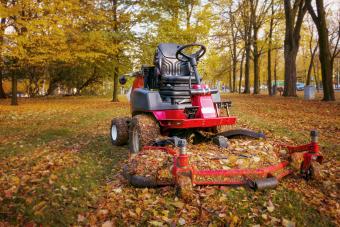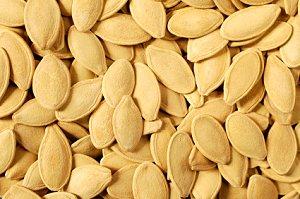
Your garden's summer glory might be past, but there's still plenty to do. A little hard work and a fall garden cleanup checklist can help make things easier for yourself next year and keep your garden as healthy as possible.
Fall is a pretty great time for planting, prepping, and general cleanup — plus there's just something satisfying about putting your garden to bed for the season. We've got you covered with a simple checklist, so grab your garden gloves and let's get going.
Basic Vegetable Fall Garden Cleanup
A basic fall cleanup routine in your vegetable garden is all about preventing any pest and disease issues for the following season and making sure your garden is all set to plant next spring. This is probably the area of your landscape you'll want to clean up the most thoroughly. Here's what you'll want to do for your veggie and herb garden cleanup.
Remove Spent or Dead Plants
Get ready to uproot or trim some of the plants that are done for the season. It's best not to leave old tomato plants, pumpkin vines, or other vegetable plants in the garden, since they can harbor pests and diseases. Dispose of anything that shows signs of disease and toss the rest in the compost bin.
Clean Up and Compost Fallen Fruit
Leaving fallen tomatoes or squashes in your garden means you are going to have dozens of them popping up next year, and you'll spend a good amount of time weeding them out. (Plus, there's nothing quite as gross as reaching into a garden bed and ending up with a handful of rotten tomato.) Clean out any fallen fruit and compost it.
Finish Harvesting and Drying Herbs
If you've kept your herbs dead-headed, you can still get another good harvest of sage, thyme, rosemary, oregano, and other herbs before it gets too cold. Cut some stalks, bundle them with twine, and hang them in a dry spot with good ventilation until they're fully dry.
When the herbs are totally dry, store them in glass containers to keep them nice and fresh. We like to keep them in a cupboard that's away from the stove so they last all winter long.
Weed Thoroughly
Word to the wise: the weeds you leave now will return with a vengeance next year. Before putting the garden to bed for the winter, give all of your beds one last thorough weeding. You'll thank yourself next spring and summer.
Apply Compost and Mulch
Leaving soil bare all winter long isn't great for it. Nutrients get leached more easily, and the soil tends to erode more quickly with the rain or snow runoff. Instead, either plant a cover crop (such as vetch), or give your beds a nice topdressing of compost and mulch (shredded fall leaves work wonderfully for this). It will provide additional nutrition to your soil and keep it healthier overall.
Make New Beds
The garden tends to slow down in the fall, and this is an excellent time to consider changes you'd like to make for next year (way easier while this season is still fresh in your mind). Do you want to expand the garden? Making those new beds for plants in the fall means that you can get planting that much sooner in spring, because you'll have done the work ahead of time.
Simple Fall Cleanup for Ornamental and Flower Gardens
While there are definitely some cleanup chores to do in any flower gardens or borders, this is one of those areas where you'll want to leave a few plants standing and not be too stringent about cleaning up leaf litter. Here are a few simple tasks to put on your fall garden cleanup checklist this year.
Remove Diseased Foliage and Spent Plants
This is the time to pull out those old, spent annuals. If your plants had any sort of disease or fungal issue, dispose of the old foliage rather than composting it to ensure it doesn't spread next year.
Don't Be in a Hurry to Cut Down Perennials
Aside from providing your garden with some winter interest, perennials can provide habitat for wildlife, as well as food (in the form of seeds) for birds. A bonus to leaving the stems standing: you won't have to wonder next spring where everything was planted, and you'll know where you have room to tuck in a few new plants before the new foliage is even up.
Leave the Leaves
It's such a temptation to rake all the fall leaves out of garden beds, but there are so many reasons to leave them. Most importantly, they often provide overwintering habitat to pollinators, and if you rake the leaves up, those pollinators won't be around to help out in the garden next year.
One awesome reason for leaving the leaves is that they can break down in your garden beds a bit, providing additional nutrients. This means healthier soil for your plants next year.
Plant Shrubs, Trees, and Perennials
Fall is the perfect time to plant trees, shrubs, and perennial plants. The weather is cool and often a bit rainy, and the soil is still warm. These are ideal conditions for root growth, which is what you want when trying to get a new plant established in your garden.
Plant Spring and Summer Blooming Bulbs
This is also the time to plant all of those beautiful spring and summer-blooming bulbs. These need the cold period provided by winter so that they can bloom next year.
Give Newly Planted Plants Plenty of Mulch
A good three- to four-inch layer of mulch (such as shredded leaves, pine straw, or bark mulch) around a new plant will prevent it from heaving out of the soil during the freeze-thaw cycles that often happen in fall and spring. They don't have strong roots yet to hold them in, so the mulch acts as a blanket that keeps the soil at a steadier temperature. Just be sure not to press the mulch right up against the trunk or stems, since this can lead to rot.
Remove Annuals From Containers
If you grew hanging baskets or pots with flowering annuals, this is the time to pull them out and compost them. While you're at it, this is a good time to give the containers a good cleaning and store them out of the weather. Next spring, you'll be ready to plant!
Weed and Mulch
A little weeding now saves a ton of weeding later. Give the flower garden a good, thorough weeding so you can reduce the amount of weeding you'll have to do next spring. Apply a three-inch deep layer of mulch to make sure no more weed seeds germinate and to keep the soil protected over the winter.
Make New Beds so They're Ready to Plant in the Spring
Cool temperatures and the slower pace of fall gardening make this an excellent time to make new beds or expand the ones you already have. Take some time to look at the layout of your garden and think about where you'd like to add even more beauty.
Yearly Fall Cleanup for the Lawn

The best way to help make sure that your lawn is as healthy and lush as possible next year is to put in a little effort and preparation this fall. None of these tasks are particularly time consuming, but they can make a big difference.
Rake Leaves or Use a Mulching Mower
Leaving fallen leaves on the grass can result in them matting and then suffocating the grass below, leading to yellow or dead patches of lawn. Rake and compost them. Or use a mulching mower, which will finely shred the leaves, which you can then leave right on your lawn to provide additional fertility.
Seed Thin or Bare Spots in the Lawn
We get it; we have some bare spots too. Luckily, cooler, rainier fall weather is the perfect time to either over seed your lawn or seed any bare areas. You'll want to sow grass seed no later than 45 days before your first fall frost to give the new grass time to get established.
Make Sure to Mow the Lawn Before It Starts Snowing
You'll need to give your lawn one last good mowing before you put the lawnmower away for the season. If you leave your grass too long, and then it sits under snow all winter, it provides the perfect situation for what's known as snow mold. We hate this stuff for a bunch of reasons (spring allergies top the list, though.)
Snow mold is a totally unattractive pink or white mold that appears on the lawn in spring. This usually happens when it snows before the ground has fully frozen. If your grass is tall, that's the perfect environment to harbor the mold. Cut the grass to around 2½ to 3 inches tall before winter.
Fertilize or Topdress With Compost
For a lush green lawn next spring and summer, fall fertilizing is the way to go. Consider topdressing the entire lawn with compost and then raking it in with a steel garden rake. If you choose to use other fertilizers, be sure to read the directions on the package in terms of how much to apply and when.
Keep Your Garden Tidy, but Not Too Tidy
Doing a garden clean-up in the fall is a surefire way to reduce pest and disease issues while also getting a jump on next year's garden. While you're running though the fall garden cleanup checklist, make sure to leave some plants standing for winter interest and as wildlife food sources. Remember that next year's butterflies may very well be overwintering in leaf litter, so leave it where it is if at all possible. Your pollinators and your garden will thank you.







